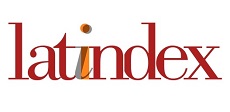Los peces Gobiidae de los arrecifes del Caribe Colombiano. IV. el género Lythrypnus
Keywords:
Lythrypnus, Peces Gobiidae, Arrecifes coralinos, Lythrypnus spilus, L. okapia, L. nesiotes, Peces de arrecifes, Taxonomía zoológica (es)Lythrypnus, Peces Gobiidae, Arrecifes coralinos, Lythrypnus spilus, L. okapia, L. nesiotes, Peces de arrecifes, Taxonomía zoológica (en)
Downloads
Se incluye información descriptiva y ecológica de siete especies del género Lythrypnus (Pisces: Gobiidae), con base en colecciones realizadas en seis áreas coralinas a lo largo del Caribe Colombiano, hasta 50 m de profundidad. Se presenta además una clave para identificar dichas especies, de las cuales dos resultaron nuevas para la ciencia: L. minimus, descrita recientemente y común sólo en el sector de las Islas del Rosario y de San Bernardo, se colectó entre 1 y 20 m y es tal vez el vertebrado más pequeño del mundo; y Lythrypnus sp., que ha sido confundida con L. crocodilus, se encontró entre 3 y 18 m, es común en numerosos sitios del Caribe (aunque no existe en las islas del Rosario y de San Bernardo) y será bautizada próximamente. Lythrypnus spilus fue la más frecuente en todo el Caribe colombiano (32% de los muestreos) y se colectó entre 4 y 40 m, mientras que L. okapia se registró por un solo ejemplar obtenido en el área de Santa Marta a 7 m; L. nesiotes habita fondos coralinos a menos de 10m y fue la única que se colectó también en aguas turbias desprovistas de coral; en contraste, L. elasson apareció sólo a profundidades de 10-40 m y fue la segunda especie más frecuente (26%); L. heterochroma es otra especie rara, colectada en las Islas del Rosario y Providencia, entre 4 y 8 m. La Bahía de Portete es la única área explorada donde no se ha encontrado ninguna especie de Lythrypnus.
Descriptive and ecological information about seven species of the genus Lythrypnus (Pisces: Gobiidae), based on collections done in six coralline areas along the Colombian Caribbean to 50 m deep, is included; a key to aid in species identification is provided. Two of the species turned out to be new for science: the pigmy goby L. minimus, recently descrited and common only at Rosario and San Bernardo islands, was collected between 1 and 20 m and may be the smallest known vertebrate; Lythrypnus sp., usually misidentified as L. crocodilus and soon to be named, was found between 3 and 18 m and is common at several Caribbean localities (but absent from Rosario and San Bernardo islands). The bluegold goby L. spilus was the most frequent in all the Colombian Caribbean (32% of the samples) and was collected between 4 and 40 m; the okapi goby L. okapia was registered for a sole specimen got at the Santa Marta region at 7 m. The island goby L. nesiotes inhabits coralline bottoms over 10 m and was the only species collected also in turbid waters without corals; on the other hand, the dwarf goby L. elasson appears only below 10-40 m deep and was the second species in frequency (26%). The disphasic goby L. heterochroma is another rare form; it was collected in Rosario and Providencia islands between 4 and 8 m. Bahía de Portete was the only explored area where no Lythrypnus species has been found.
How to Cite
APA
ACM
ACS
ABNT
Chicago
Harvard
IEEE
MLA
Turabian
Vancouver
Download Citation
Article abstract page views
Downloads
License
Copyright (c) 1992 Caldasia

This work is licensed under a Creative Commons Attribution 4.0 International License.
Authors who publish with this journal agree to the following terms:
- Authors retain copyright and grant the journal right of first publication with the work simultaneously licensed under a Creative Commons Attribution License that allows others to share the work with an acknowledgement of the work's authorship and initial publication in this journal.
- Authors are able to enter into separate, additional contractual arrangements for the non-exclusive distribution of the journal's published version of the work (e.g., post it to an institutional repository or publish it in a book), with an acknowledgement of its initial publication in this journal.
- Authors are permitted and encouraged to post their work online (e.g., in institutional repositories or on their website) prior to and during the submission process, as it can lead to productive exchanges, as well as earlier and greater citation of published work (See The Effect of Open Access).































